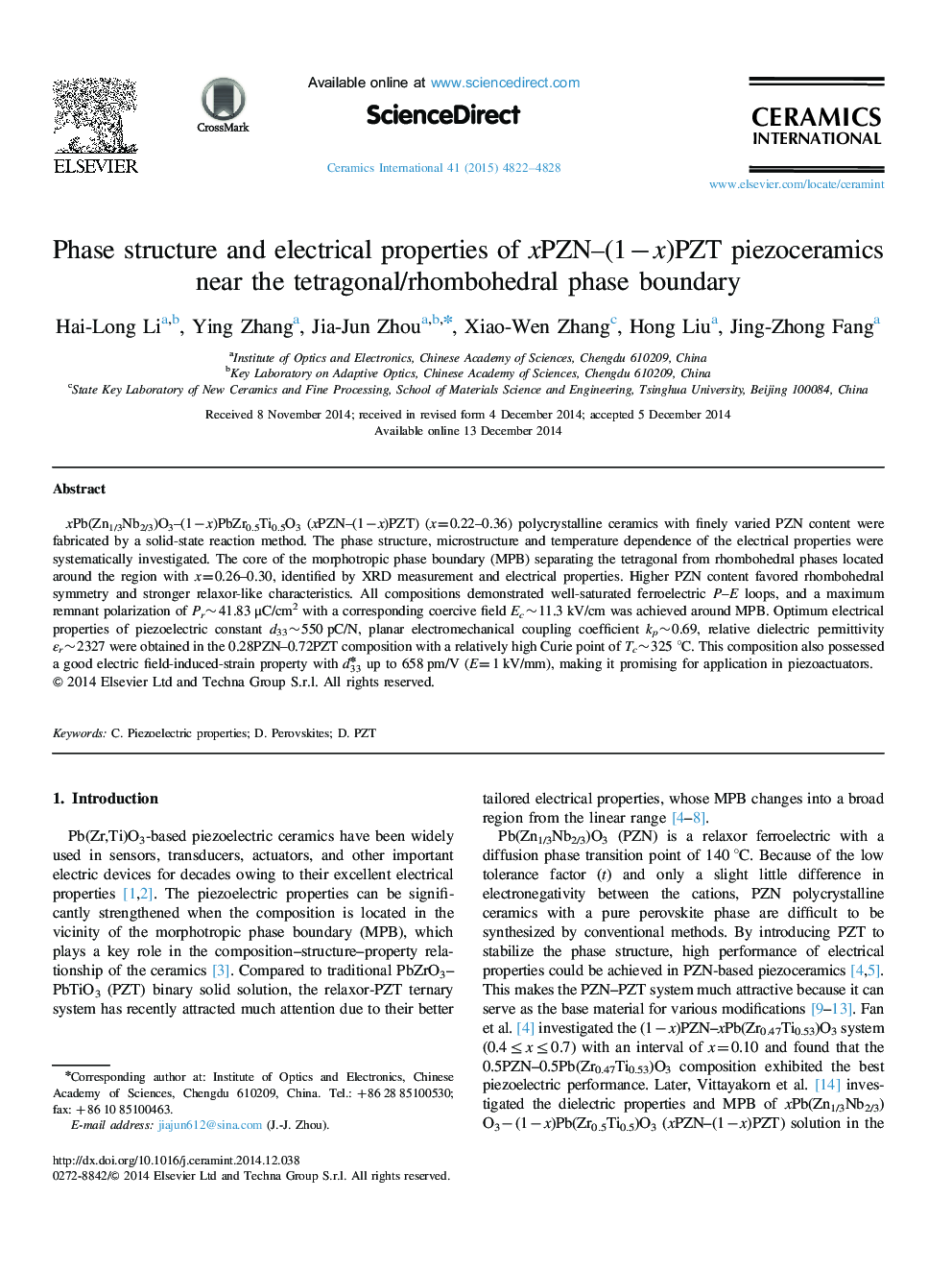| Article ID | Journal | Published Year | Pages | File Type |
|---|---|---|---|---|
| 1460365 | Ceramics International | 2015 | 7 Pages |
xPb(Zn1/3Nb2/3)O3–(1−x)PbZr0.5Ti0.5O3 (xPZN–(1−x)PZT) (x=0.22–0.36) polycrystalline ceramics with finely varied PZN content were fabricated by a solid-state reaction method. The phase structure, microstructure and temperature dependence of the electrical properties were systematically investigated. The core of the morphotropic phase boundary (MPB) separating the tetragonal from rhombohedral phases located around the region with x=0.26–0.30, identified by XRD measurement and electrical properties. Higher PZN content favored rhombohedral symmetry and stronger relaxor-like characteristics. All compositions demonstrated well-saturated ferroelectric P–E loops, and a maximum remnant polarization of Pr~41.83 μC/cm2 with a corresponding coercive field Ec~11.3 kV/cm was achieved around MPB. Optimum electrical properties of piezoelectric constant d33~550 pC/N, planar electromechanical coupling coefficient kp~0.69, relative dielectric permittivity εr~2327 were obtained in the 0.28PZN–0.72PZT composition with a relatively high Curie point of Tc~325 °C. This composition also possessed a good electric field-induced-strain property with d33⁎ up to 658 pm/V (E=1 kV/mm), making it promising for application in piezoactuators.
